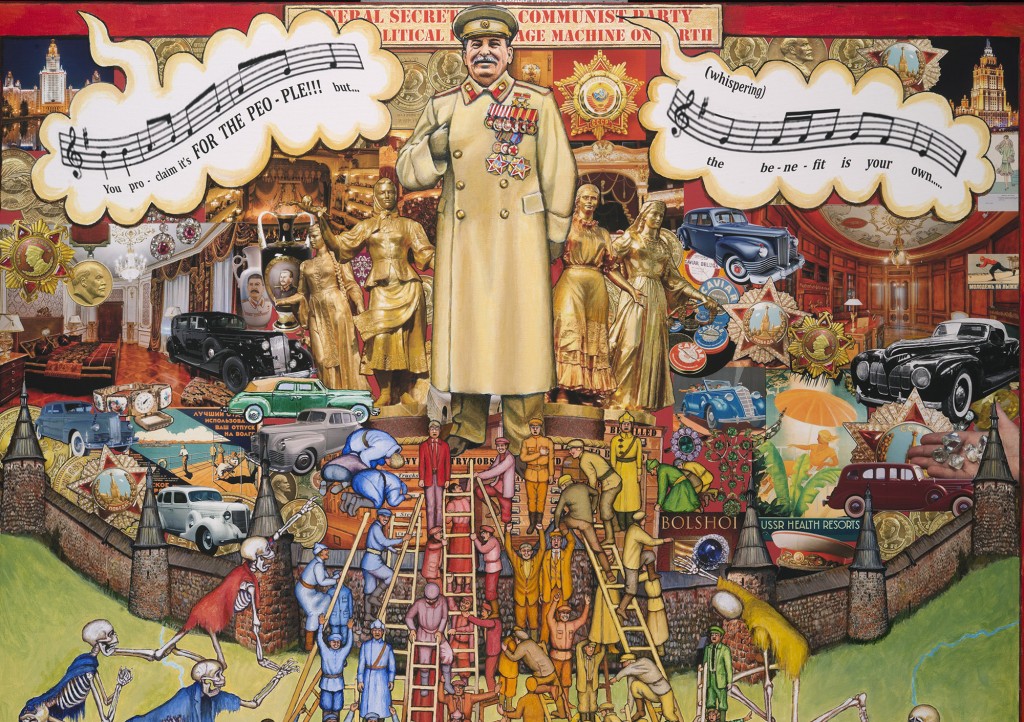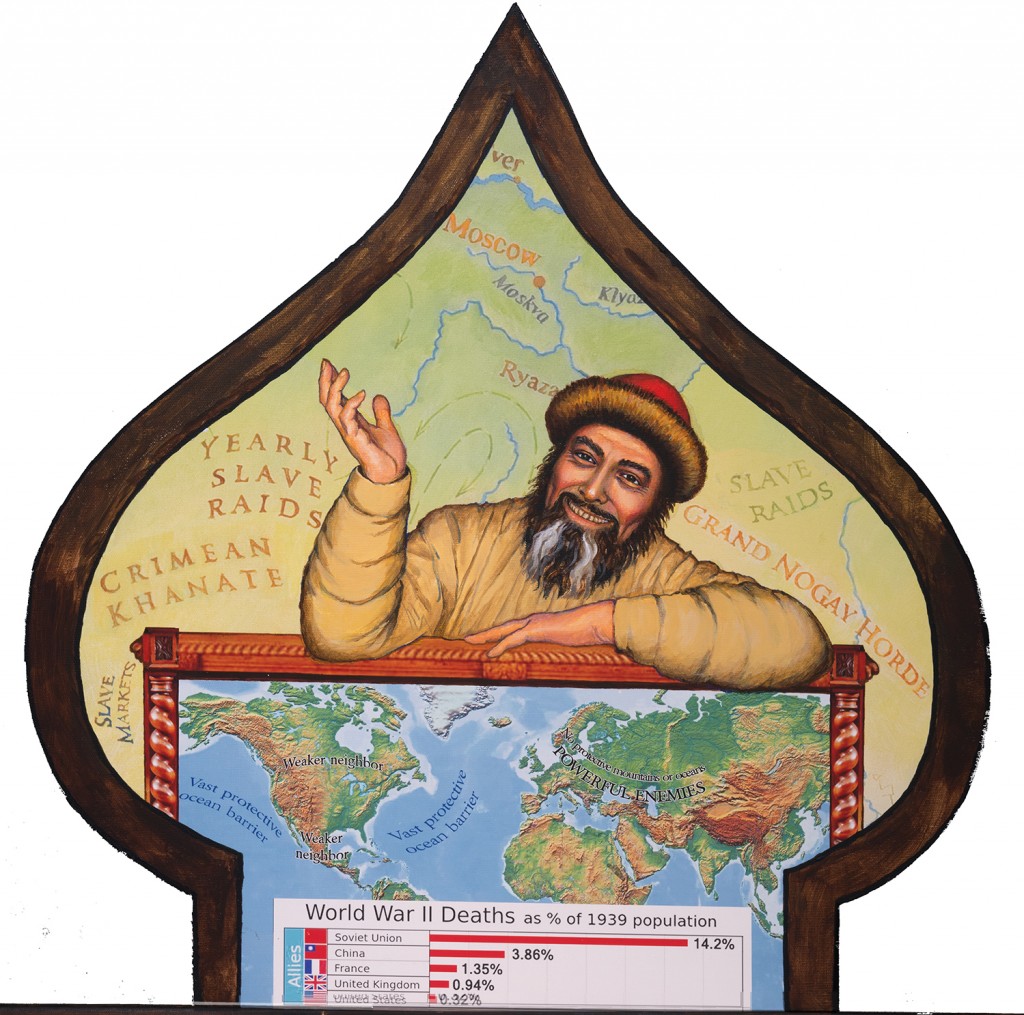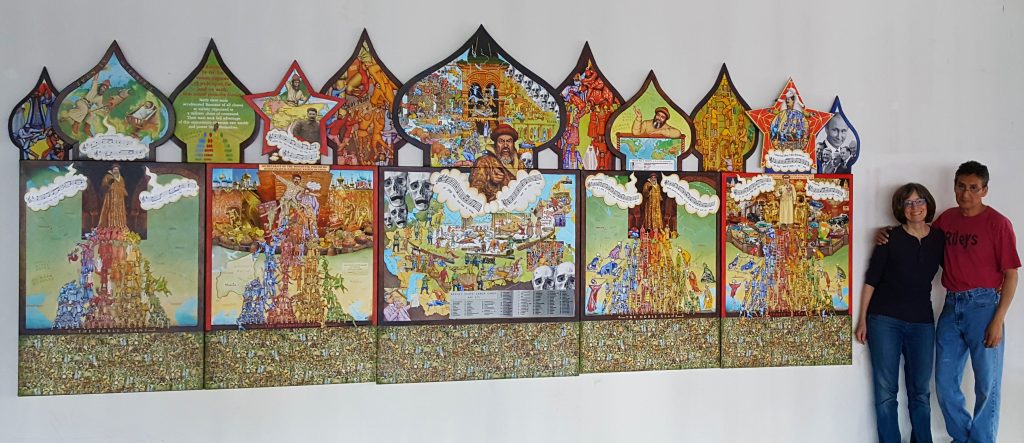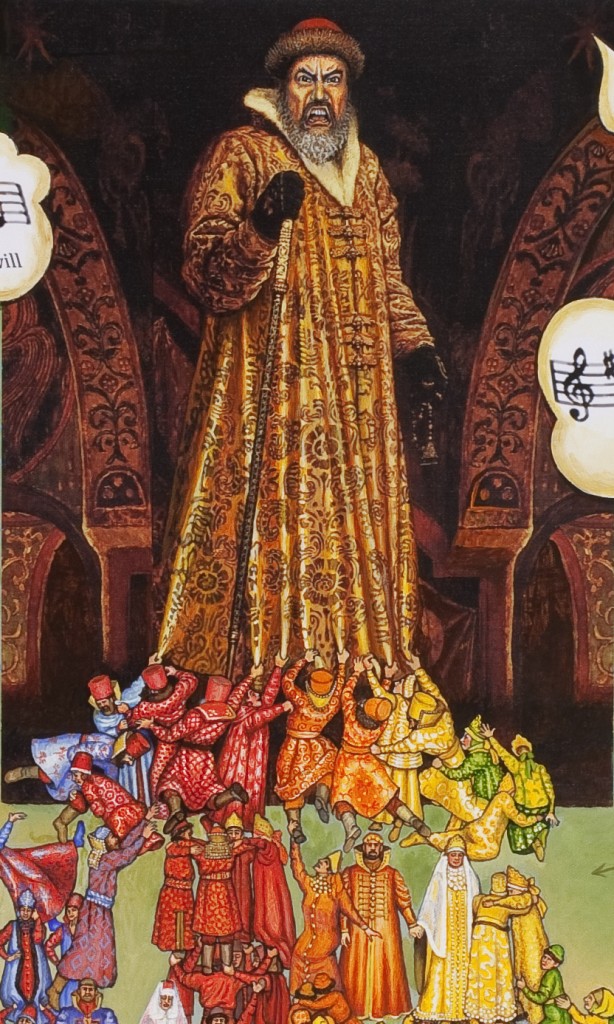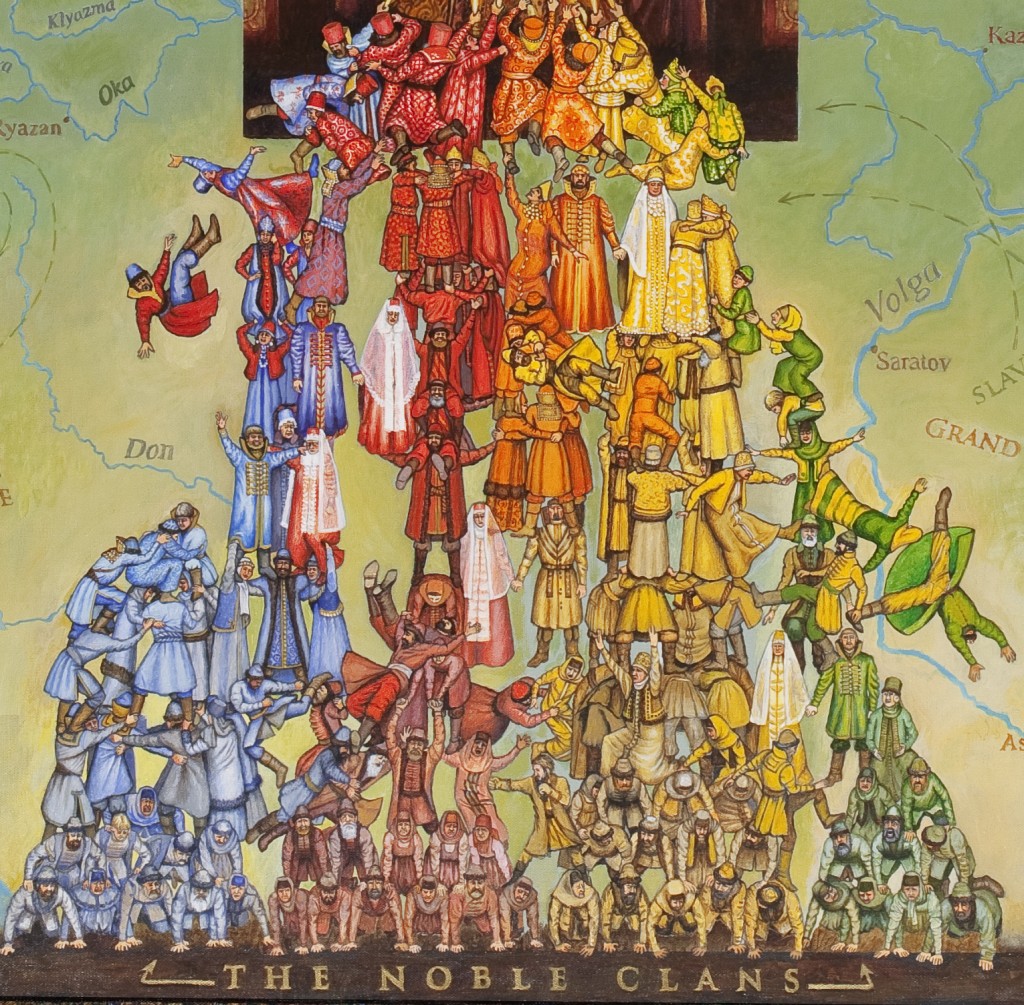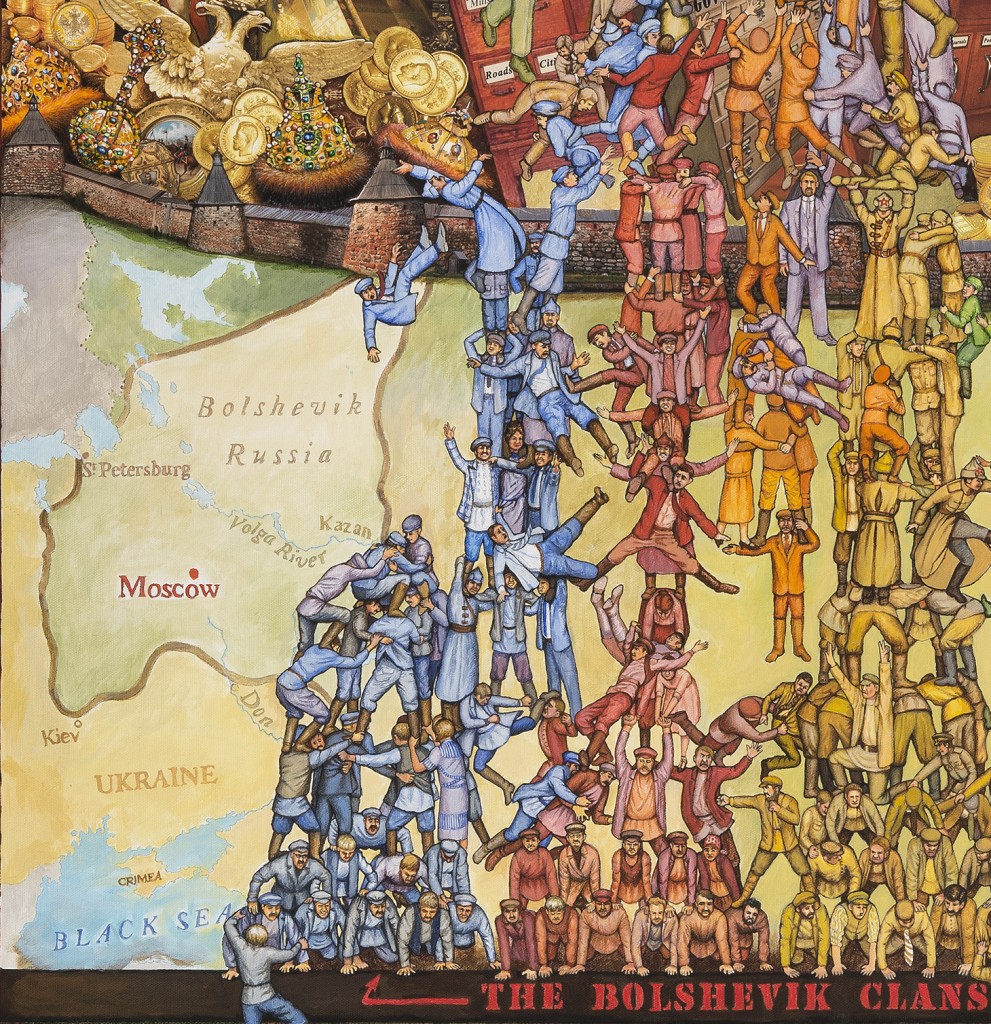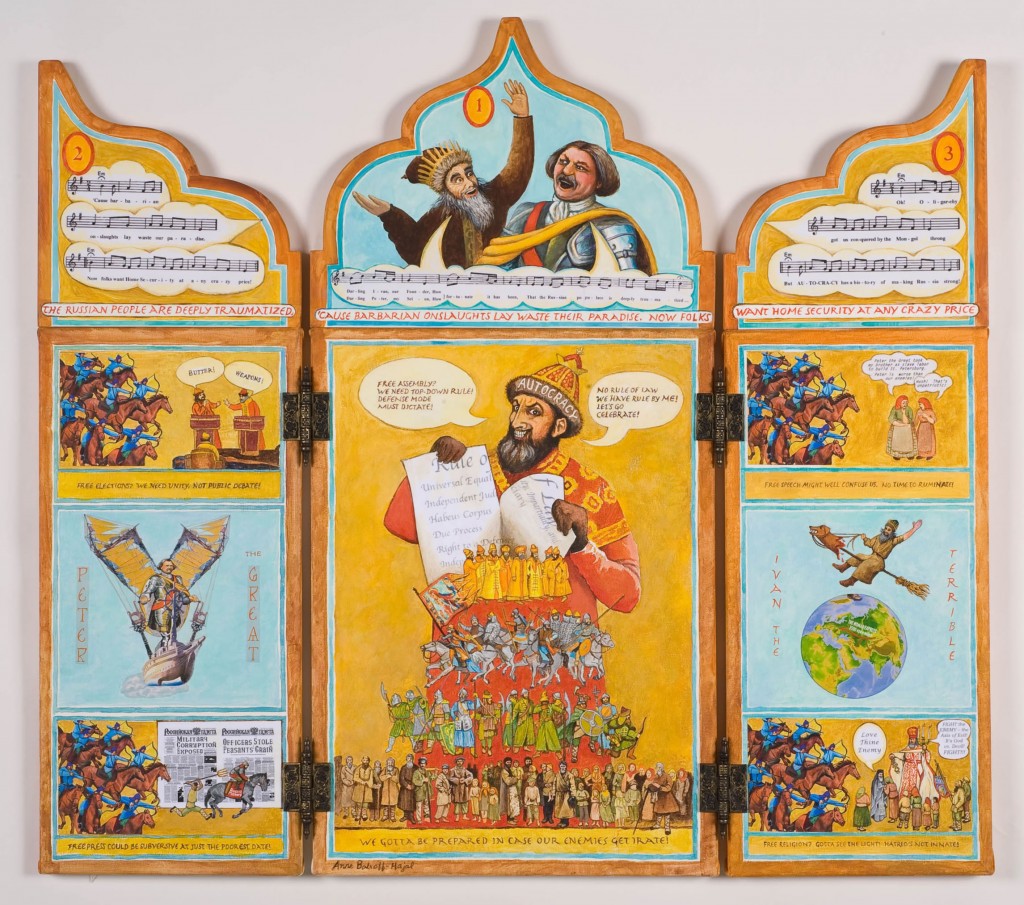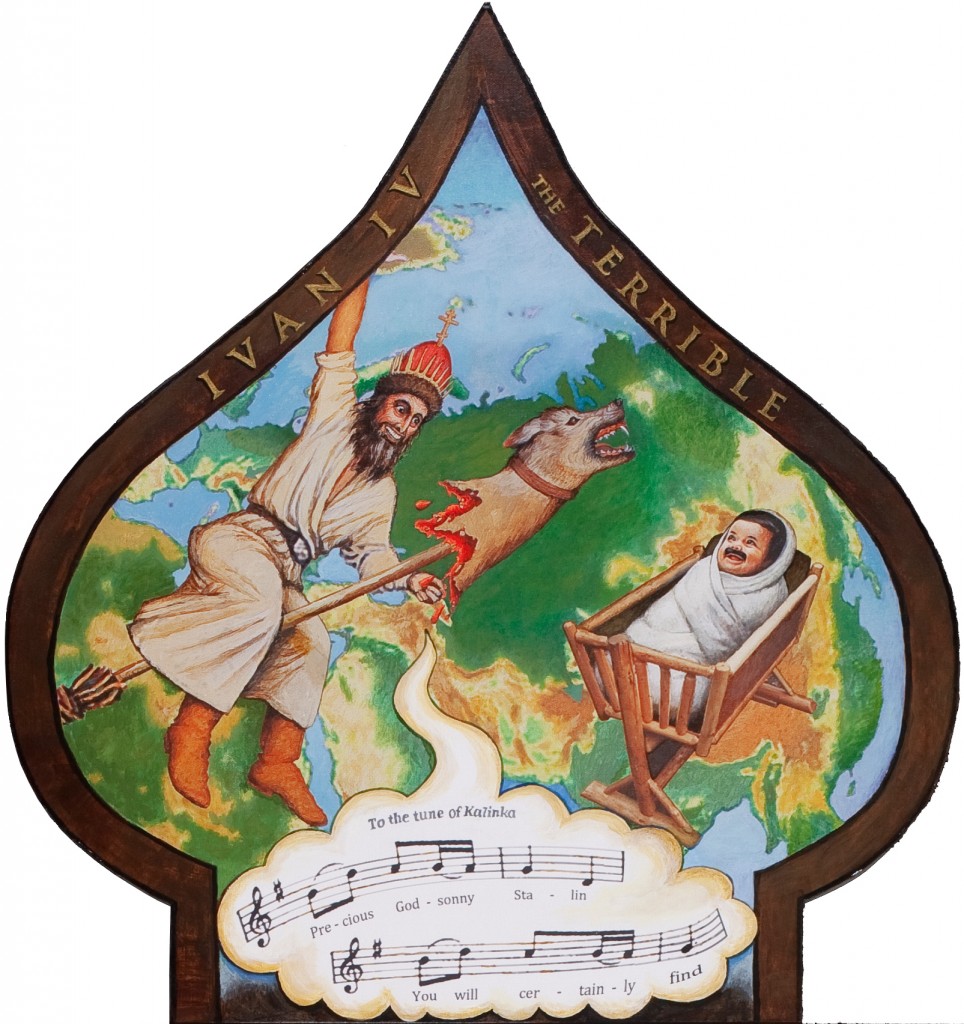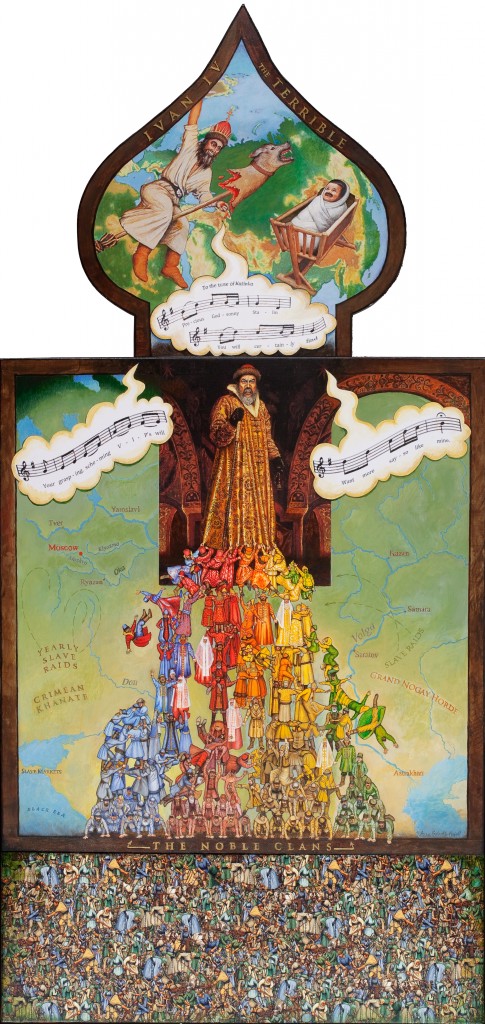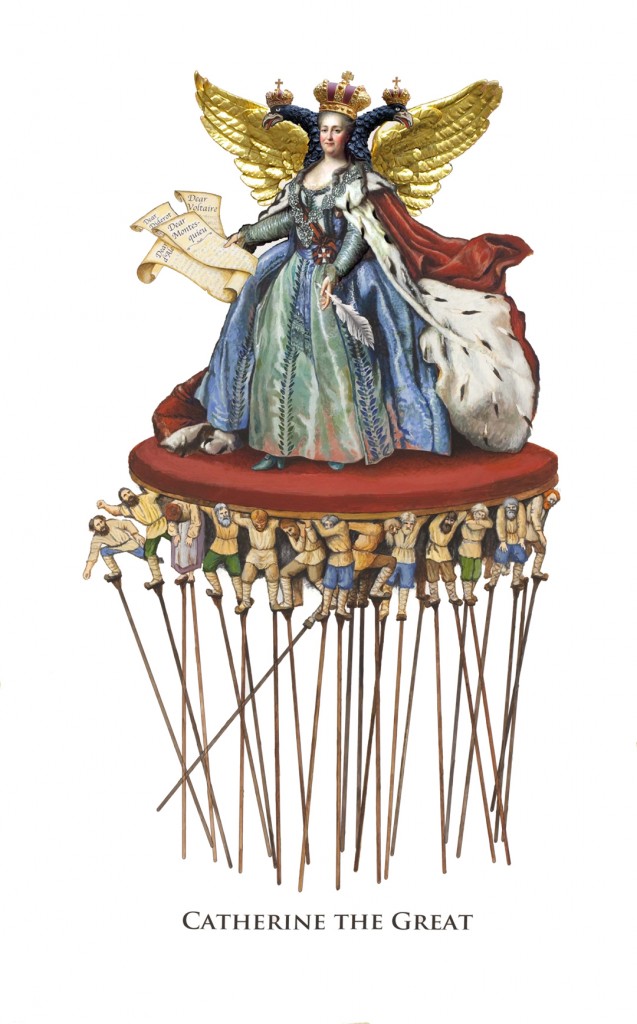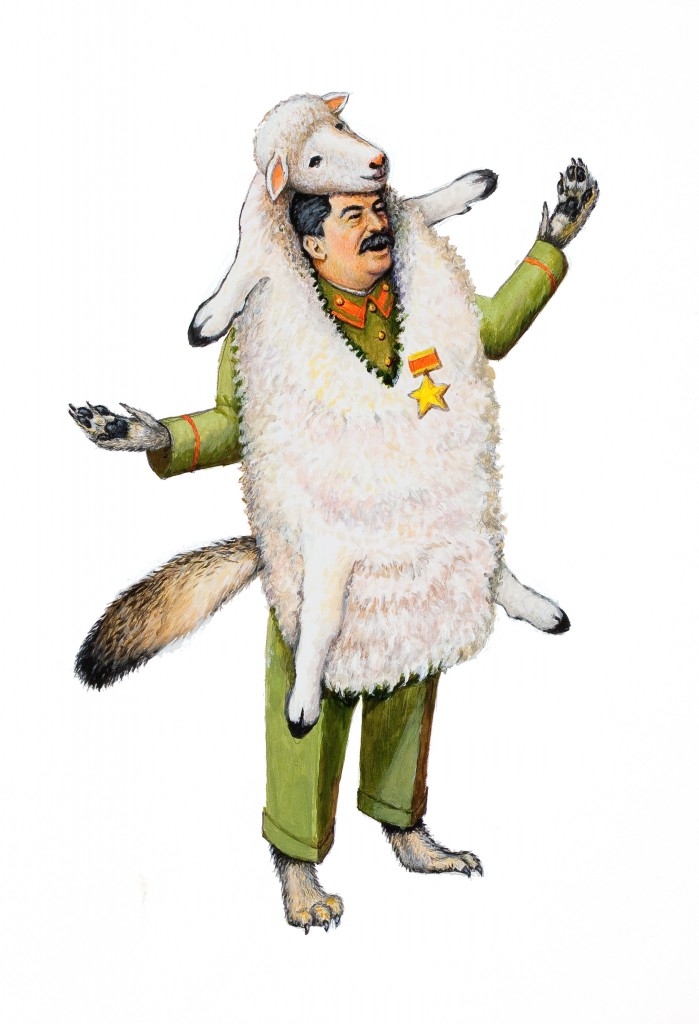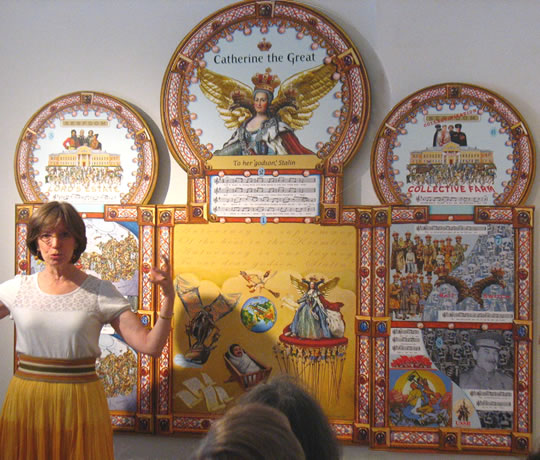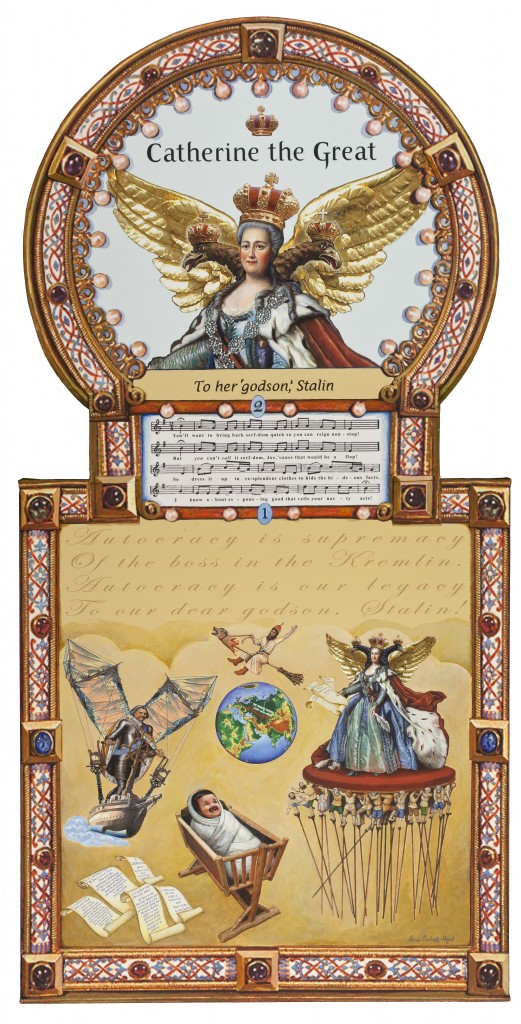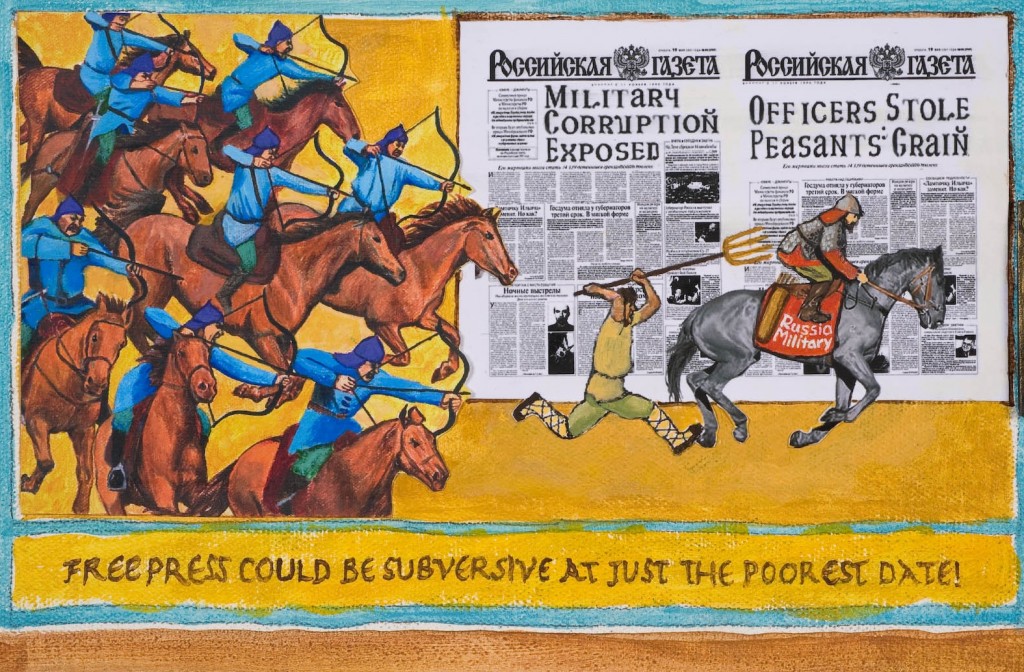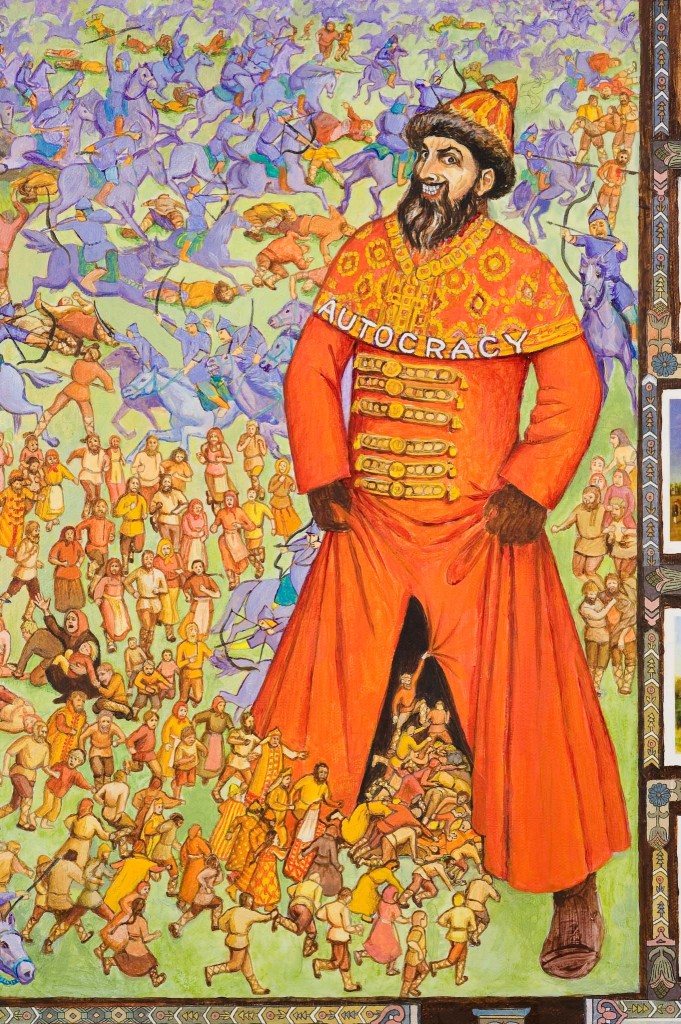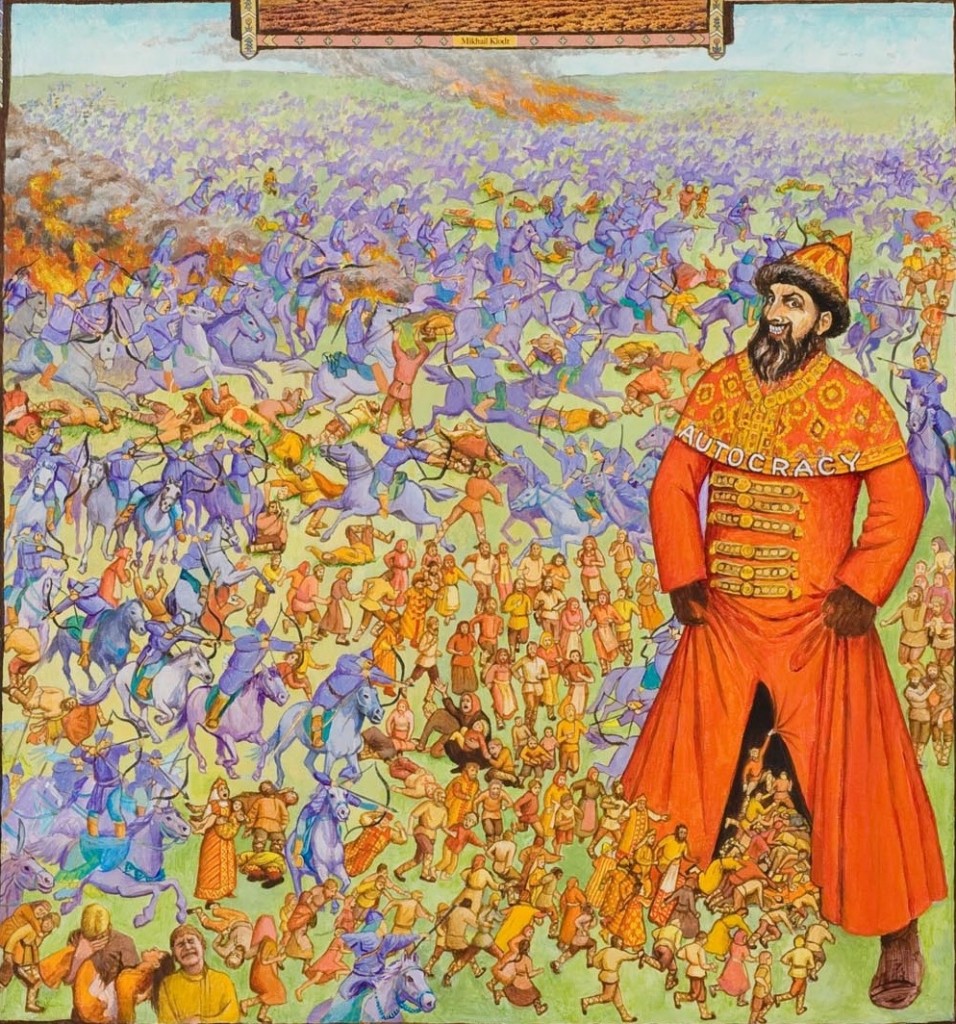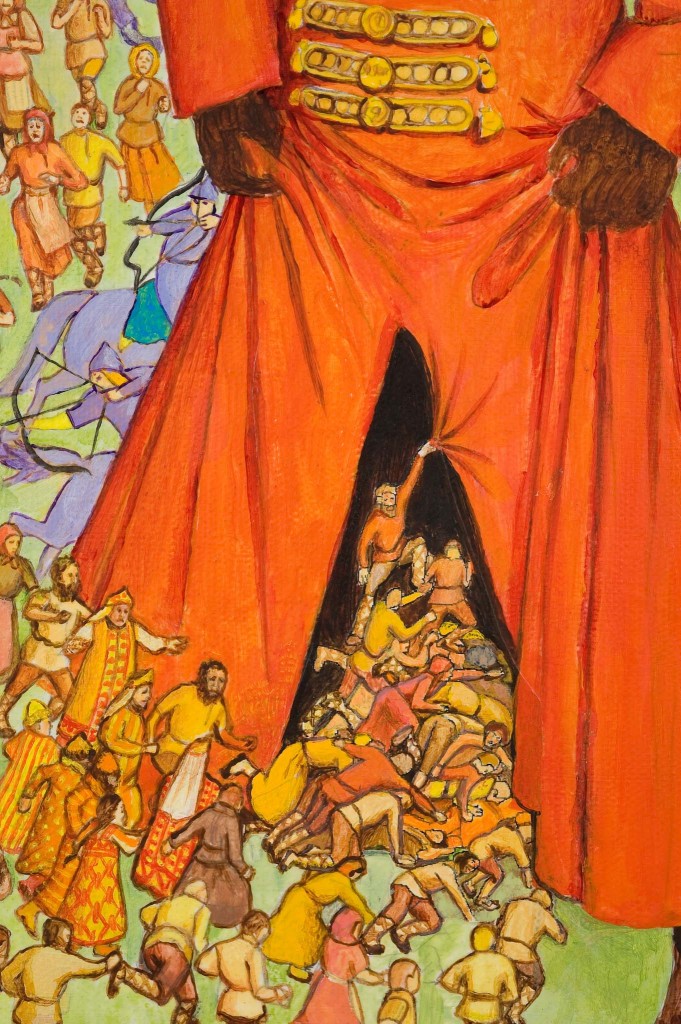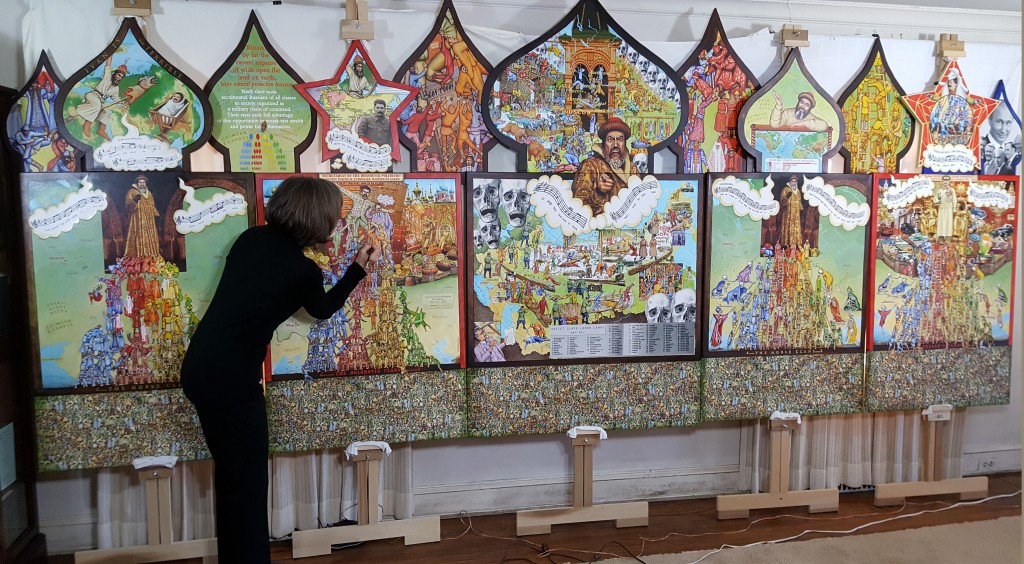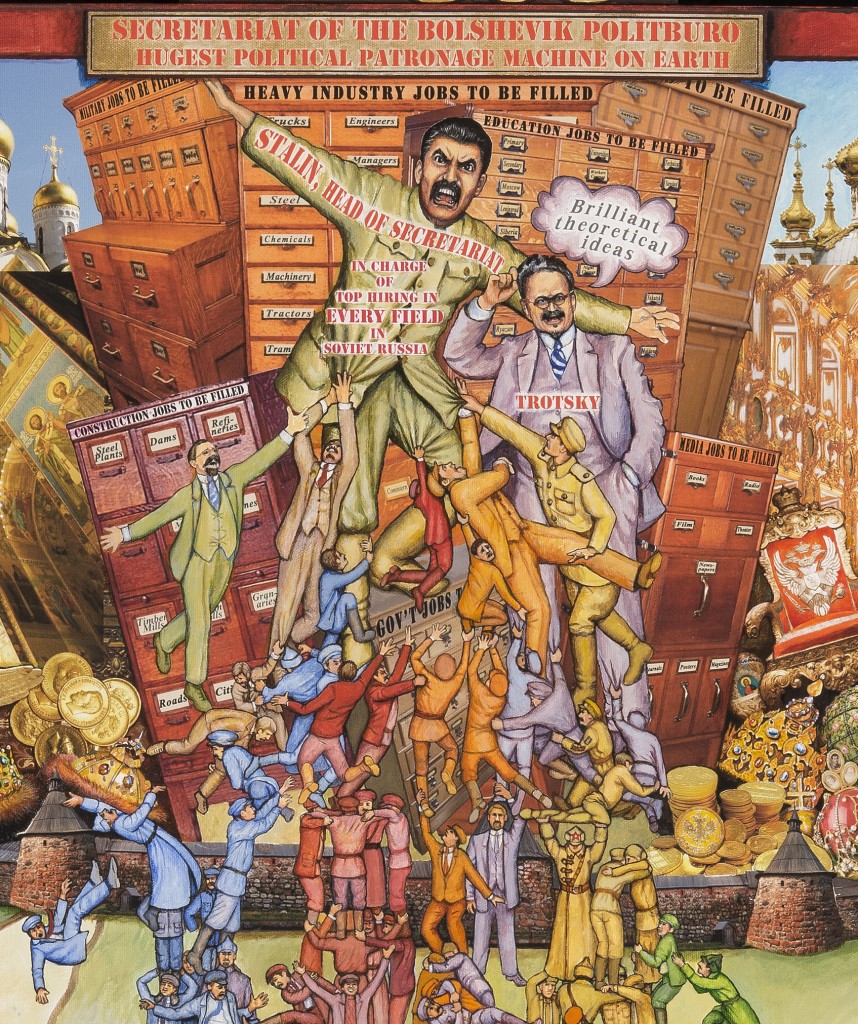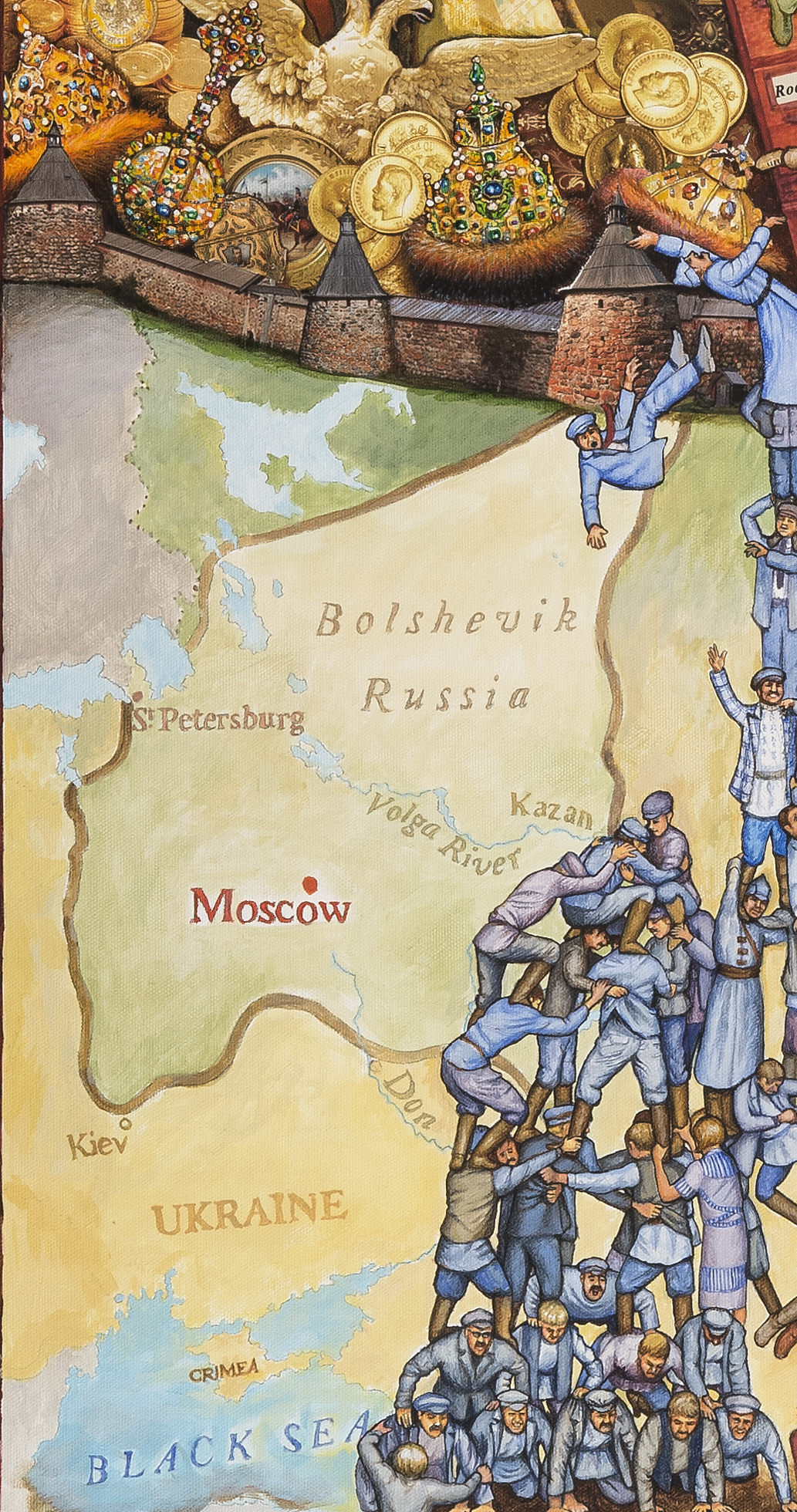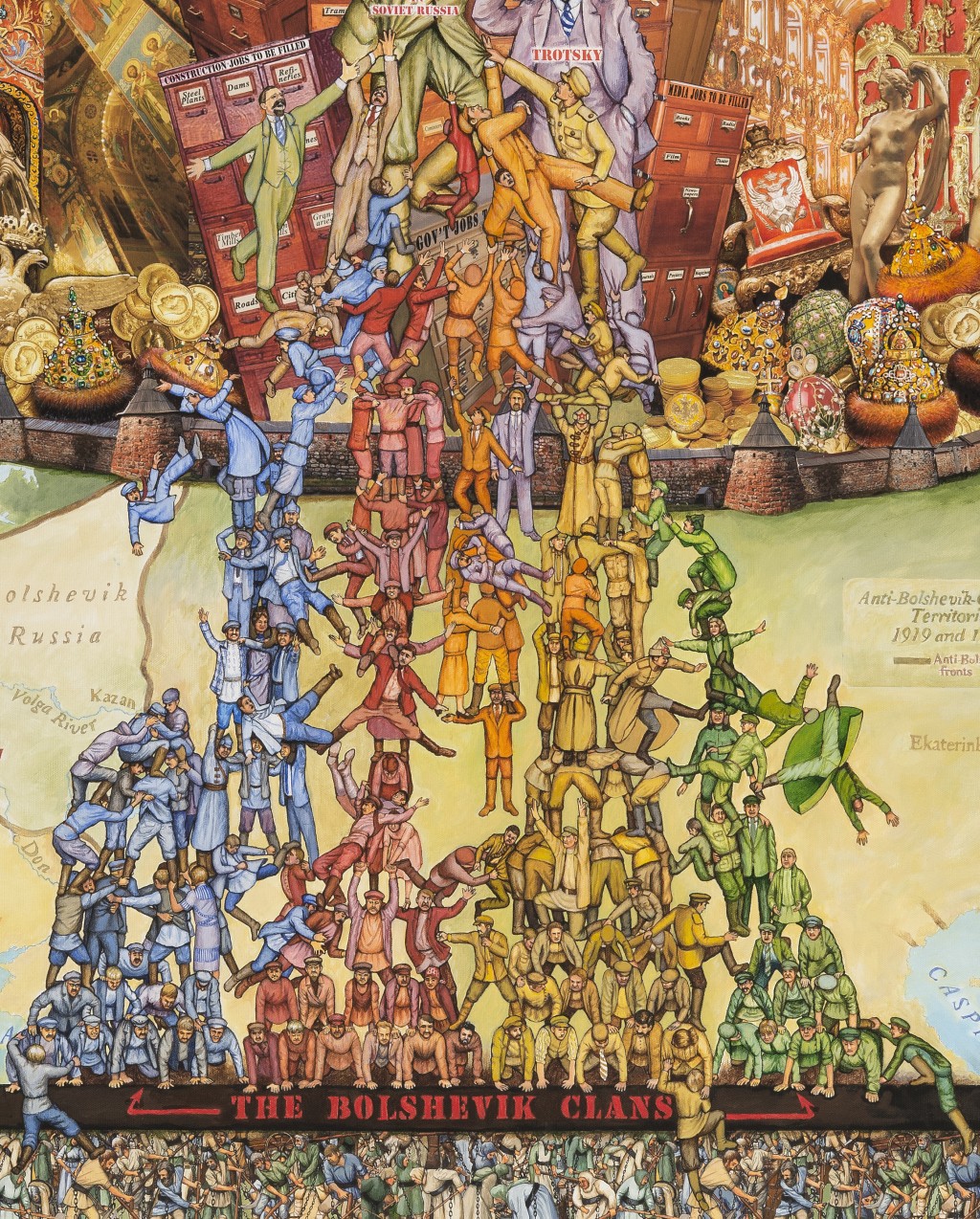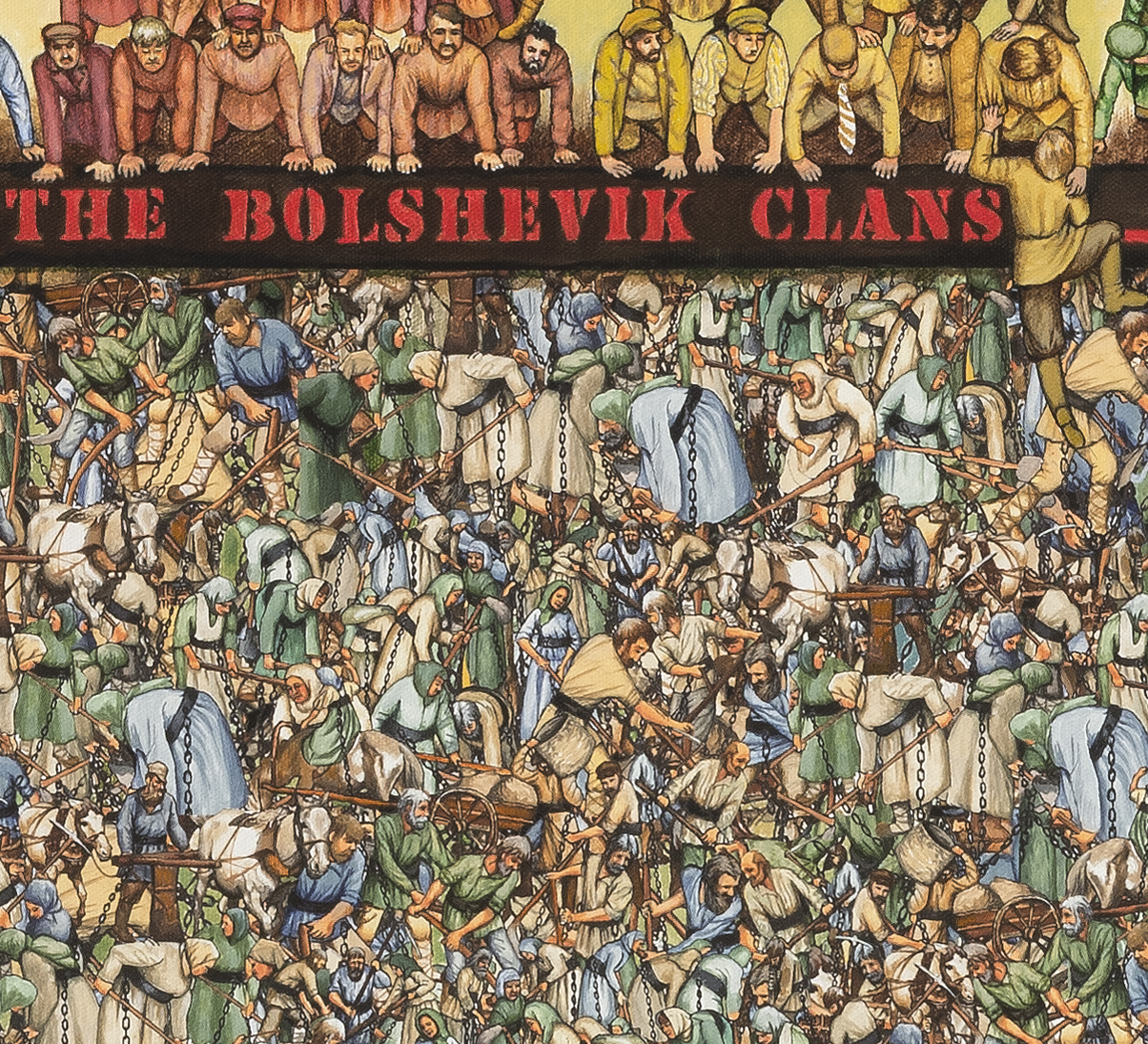Darling Godsonny Stalin is now a triptych (on its way to becoming a 5-paneled piece). Details of the two side panels of this large, detailed artwork are here. Closeups of the center panel are below, on this page.
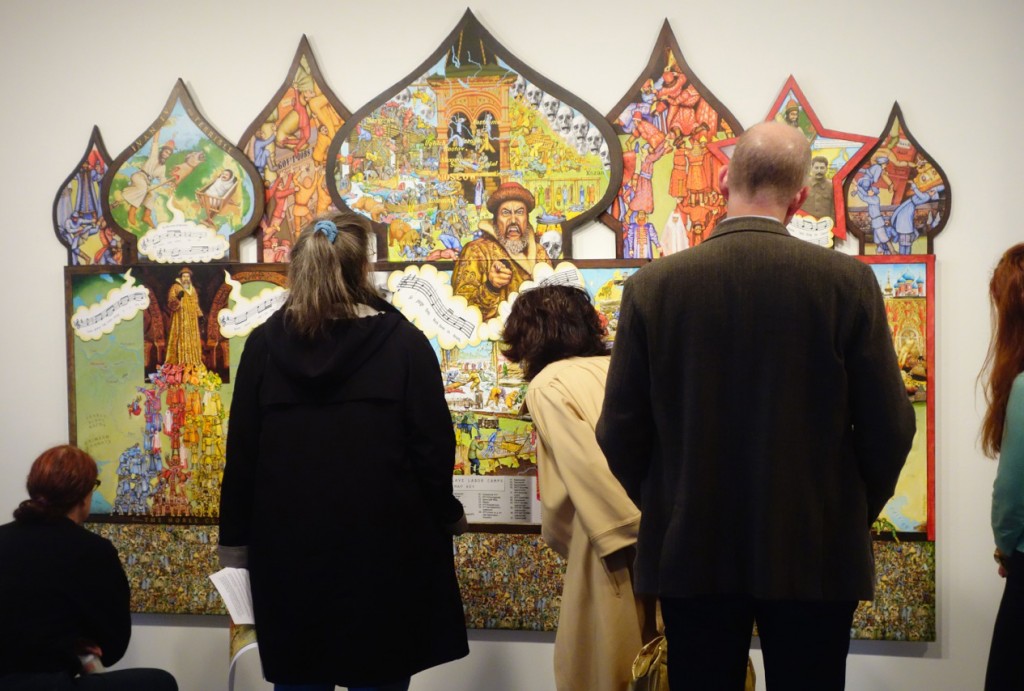
Visitors to opening reception for “Russia Through the Looking Glass: Terror, Humanity, and Geo-Politics Through History” view DARLING GODSONNY STALIN
_____
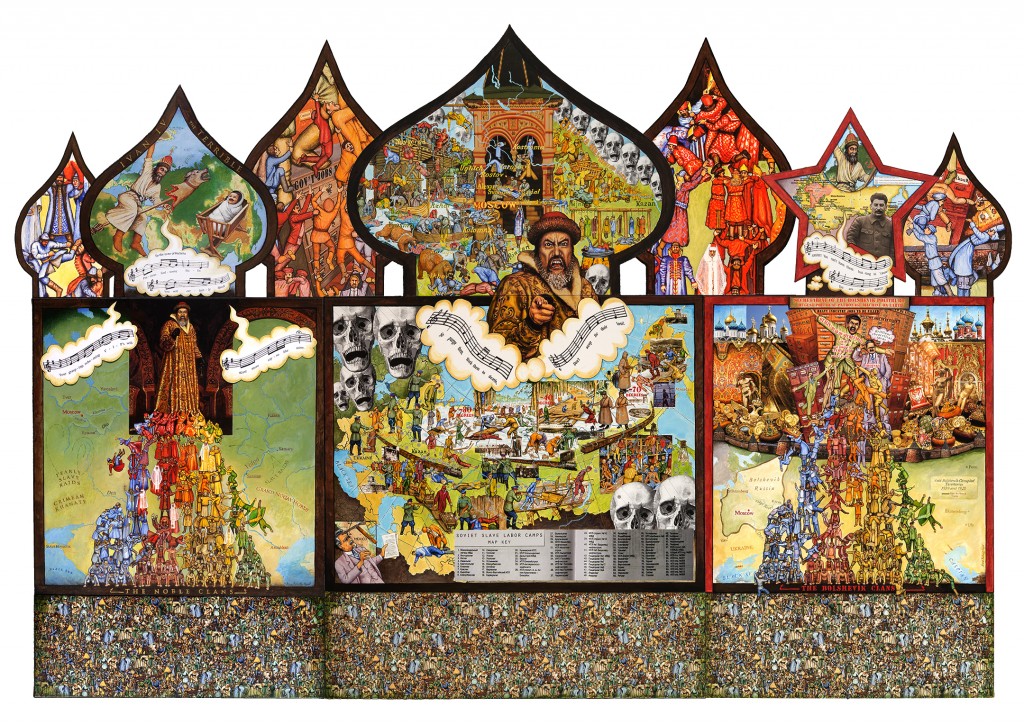
DARLING GODSONNY STALIN . Currently 9′ x 6” . Acrylic paint and digital images on canvas and board .
Darling Godsonny Stalin is narrated in song by “fairy godfather” Ivan the Terrible. Ivan gives his infant “godson” Stalin the blessings of Russia’s past and “advice” on how to handle his 20th century future.
Ivan instructs Stalin to follow the example of Ivan’s own 16th century terror against individual members of powerful clans, portrayed in the central onion-dome of the artwork. (For more about Ivan’s terror, click here.)
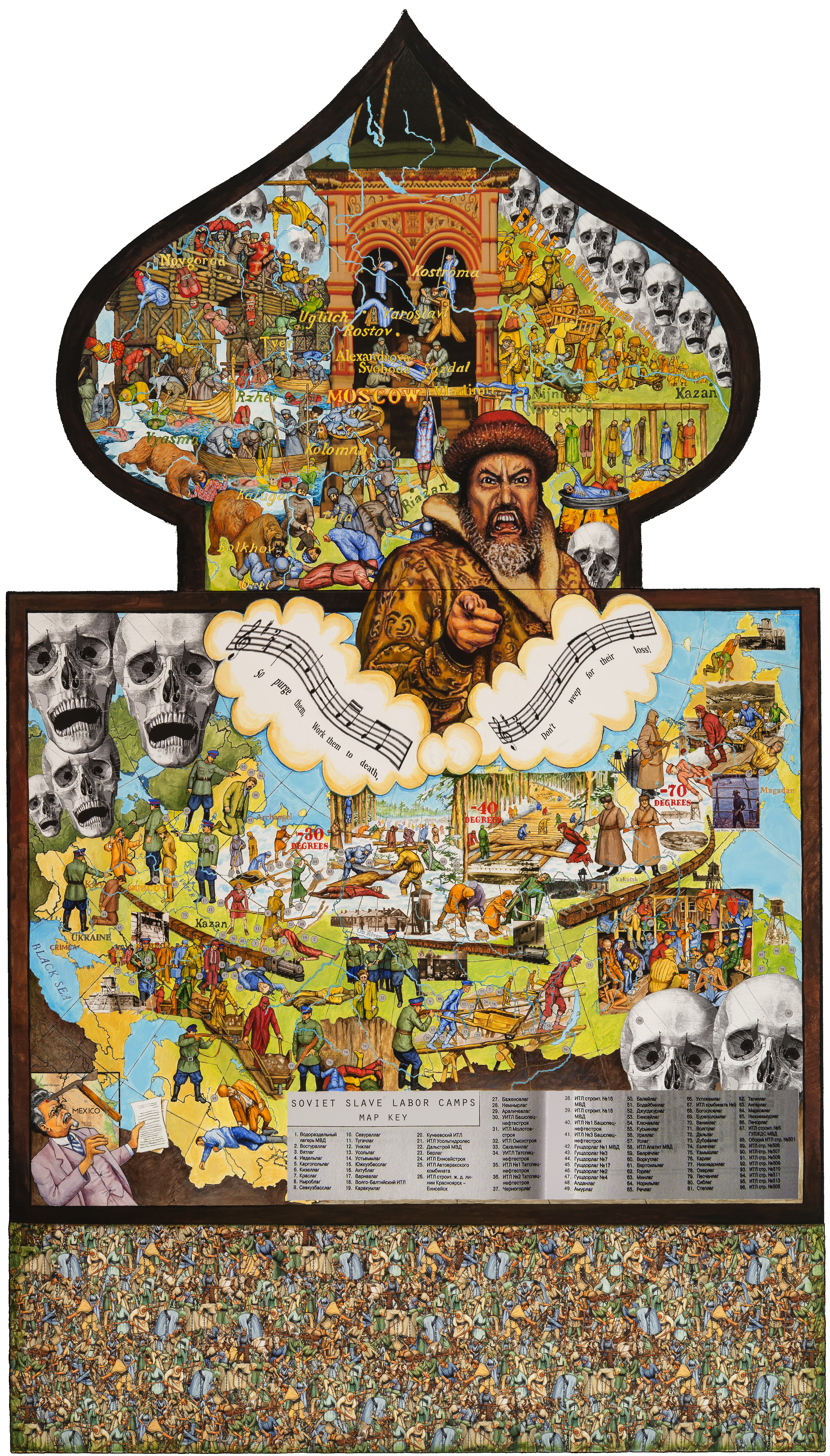
DETAIL of DARLING GODSONNY STALIN: entire central panel . 42″ x 75″
__________

DETAIL of DARLING GODSONNY STALIN: Ivan sings his “advice” to his infant “godson” Stalin.
The left side of the triptych’s large onion-dome portrays Ivan’s Oprichniki (his private army) throwing Novgorod clan members off a bridge, then pushing anyone who surfaced back down under the ice.
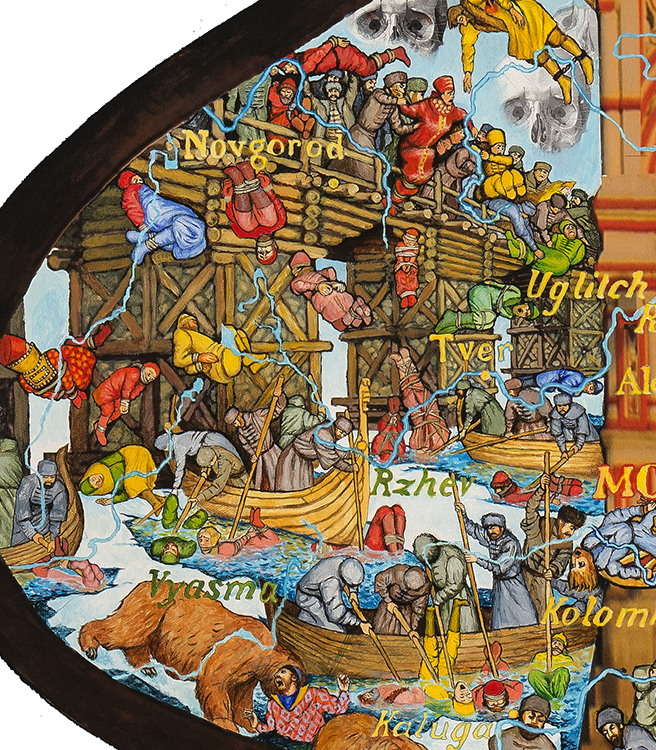
Detail of middle onion-dome of Darling Godsonny Stalin – scene of Novgorod massacre described in historical sources.
Historians today all agree that Ivan the Terrible killed thousands of his own people during his terror. But – due to the skimpy historical record – historians continue to debate exactly how horrific Ivan’s methods were.
The right side of the artwork’s central onion dome portrays the members of powerful clans whose land was expropriated, and who were exiled to live on estates in Ivan’s newly conquered territories around Kazan. For more on these exiles, click here.
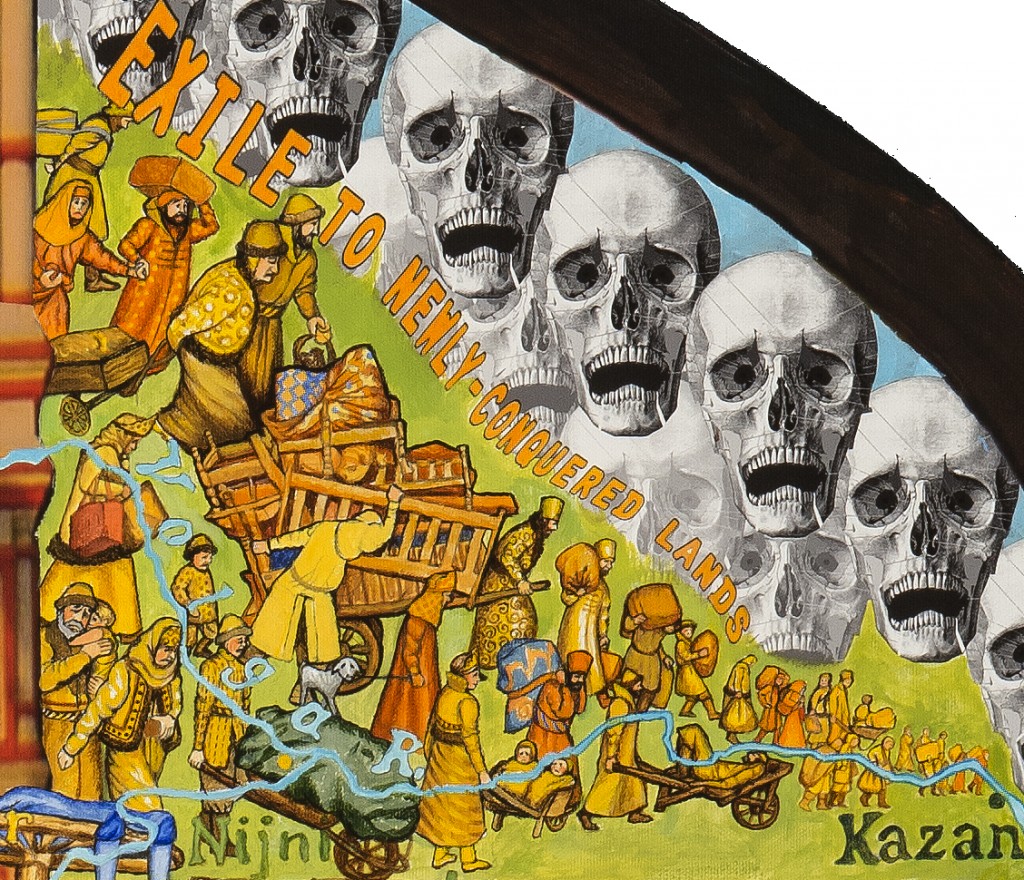
Right side of onion-dome, middle panel of Darling Godsonny Stalin
Stalin’s 20th century purges, remarkably similar in many ways to those of Ivan in the 16th century, peaked in 1937-8. Stalin executed virtually all of the Bolshevik leaders who had led the revolution (Lenin had died of repeated strokes in the early 1920s).
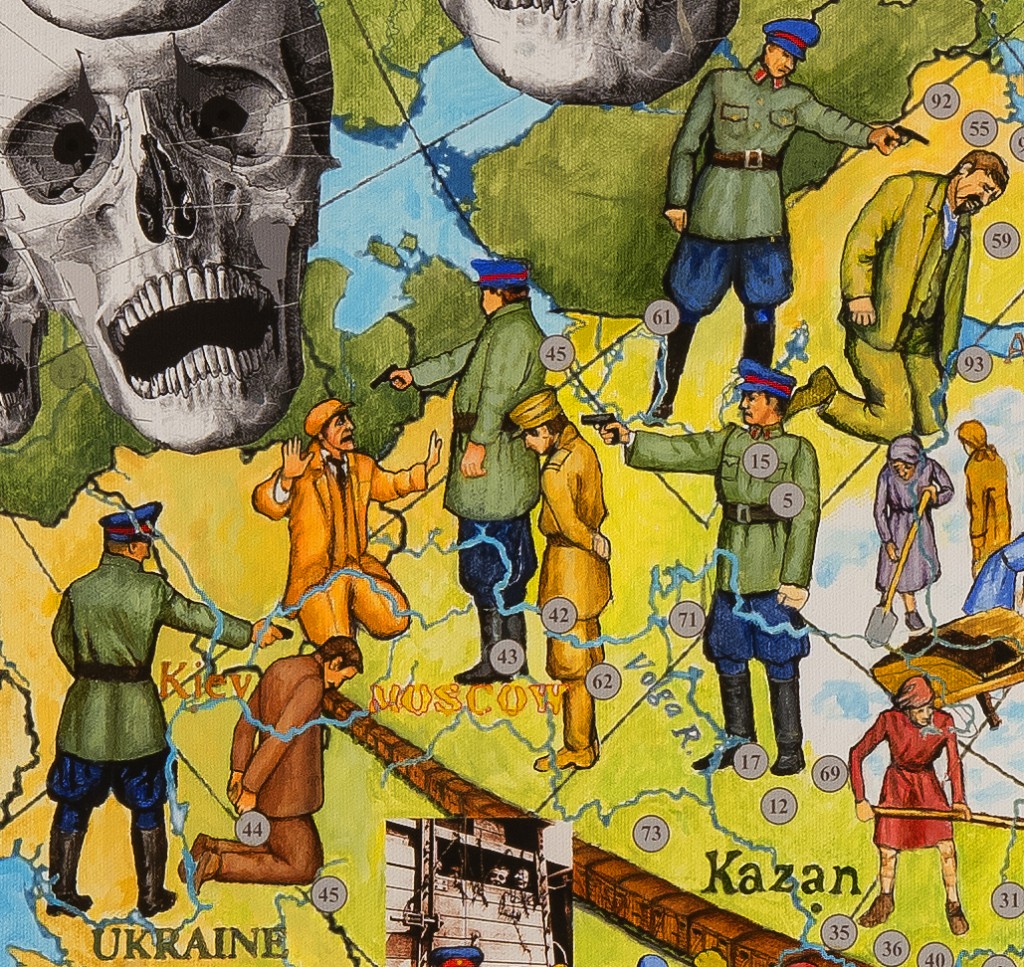
DETAIL of DARLING GODSONNY STALIN: Most top Bolshevik leaders were executed.
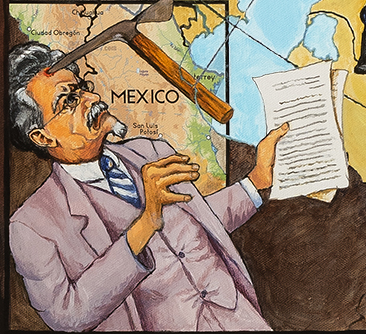
DETAIL of DARLING GODSONNY STALIN: Trotsky’s assassination.
Trotsky – who Stalin viewed as his most threatening rival – was expelled from the USSR. Trotsky’s sons had both been killed at Stalin’s behest, and Trotsky knew the noose was tightening around him as well. He was living in Mexico when he was assassinated, by means of a mountaineer’s ice pick, in 1940.
Other Bolsheviks – whether careerists or dedicated, hardworking idealists – were arrested and transported on trains to slave labor camps in Siberia and other locations across the Soviet Union. Some died of starvation, thirst, or illness while being transported thousands of miles.

DETAIL of DARLING GODSONNY STALIN: Prisoner transport to GULAG slave labor camps.
Some prisoners were executed and buried in mass graves.
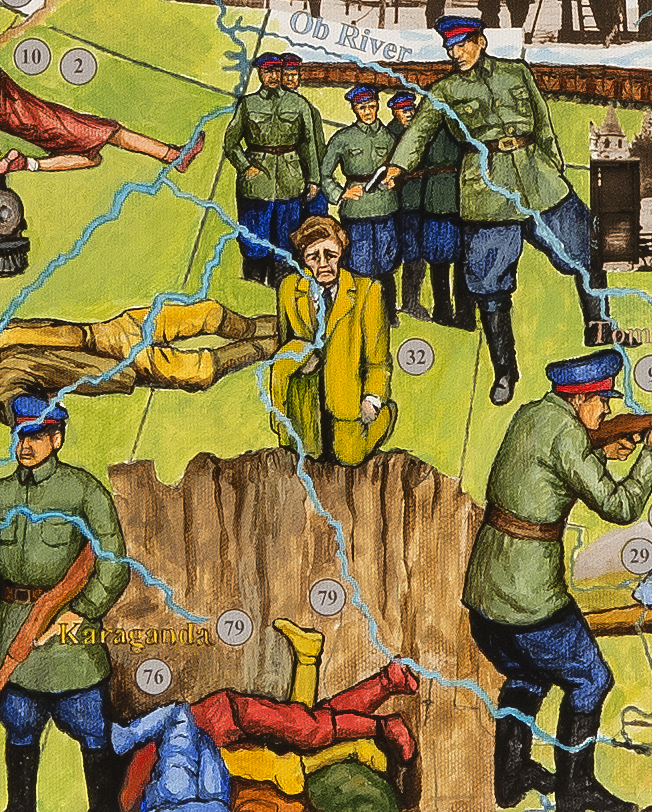
DETAIL of DARLING GODSONNY STALIN: Execution and mass graves.
Political prisoners were put to work building large-scale infrastructure projects: canals, mines, and cities in the far north (such as Norilsk). Soviet Russia was overwhelmingly non-industrialized, so much of this labor was done by human power with non-mechanized equipment like picks and wheelbarrows. Inadequately fed and clothed, this was a devastating experience for many who had once been leaders of the new young country.

DETAIL of DARLING GODSONNY STALIN: political prisoners excavating a canal and removing the soil with wheelbarrows.
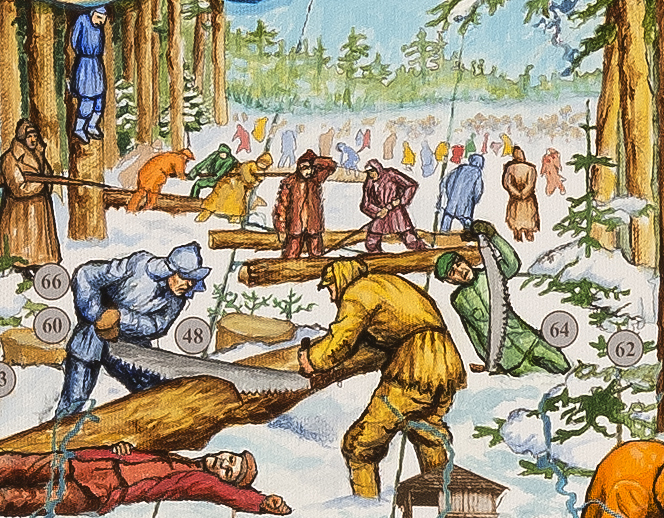
DETAIL of DARLING GODSONNY STALIN: prisoners lumbering in Soviet Russia’s far north.
The push for rapid industrialization required construction material. The heavily-forested far north provided an unending source of lumber. The cold, tens of degrees below zero, was unbearable for prisoners whose ragged clothing couldn’t protect them.
Roads had to be built, and lumber was plentiful, so they were used.

DETAIL of DARLING GODSONNY STALIN: building a log road in the far north.

DETAIL of DARLING GODSONNY STALIN: Prisoners in Magadan, in the far northeast, mined gold and diamonds using wheelbarrows.
The rich gold and diamond fields of the USSR’s far northeast were mined by political prisoners using wheelbarrows and picks.
Prisoners were housed in freezing barracks.

DETAIL of DARLING GODSONNY STALIN: interior of political prisoners’ barracks.
_____





















